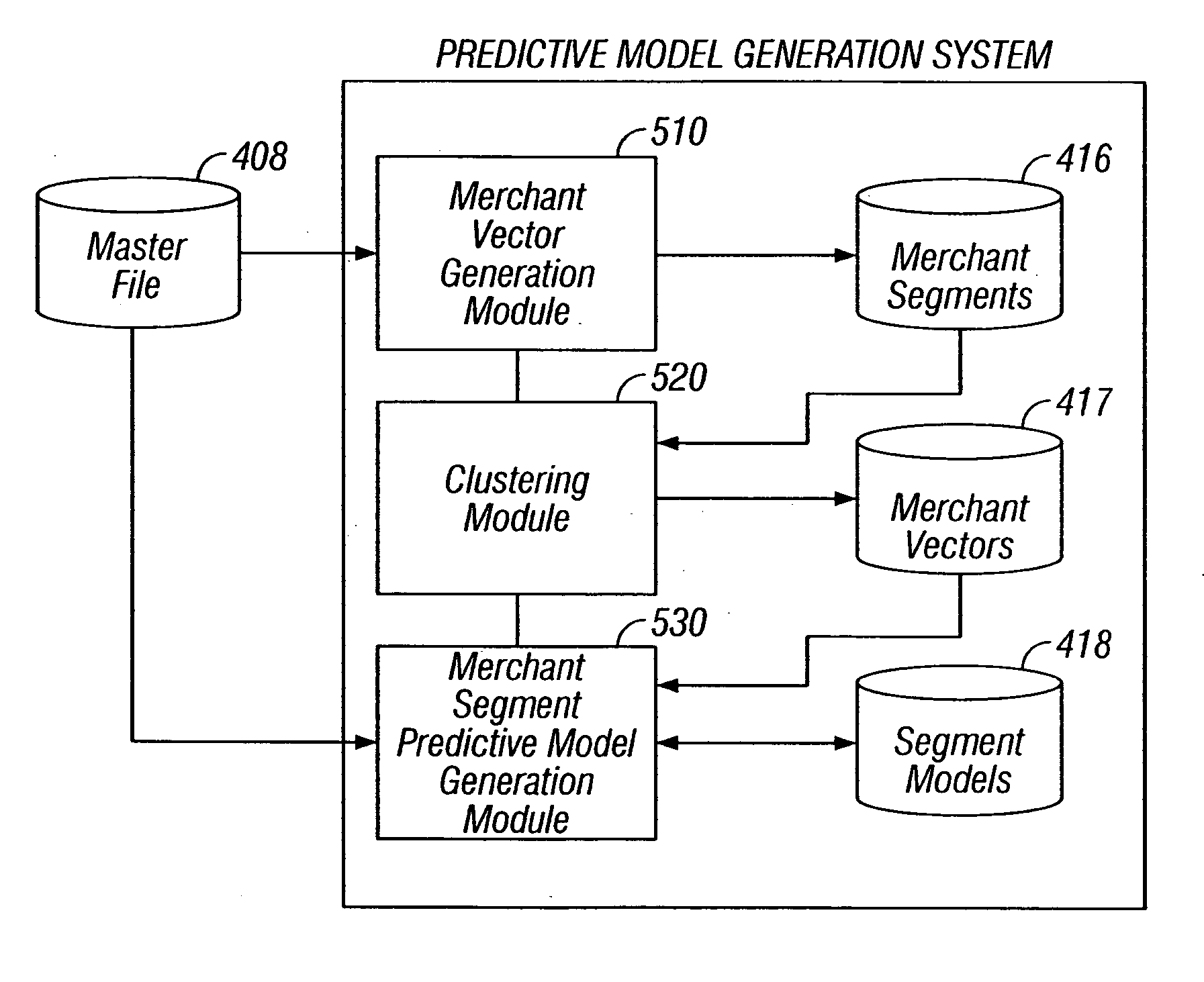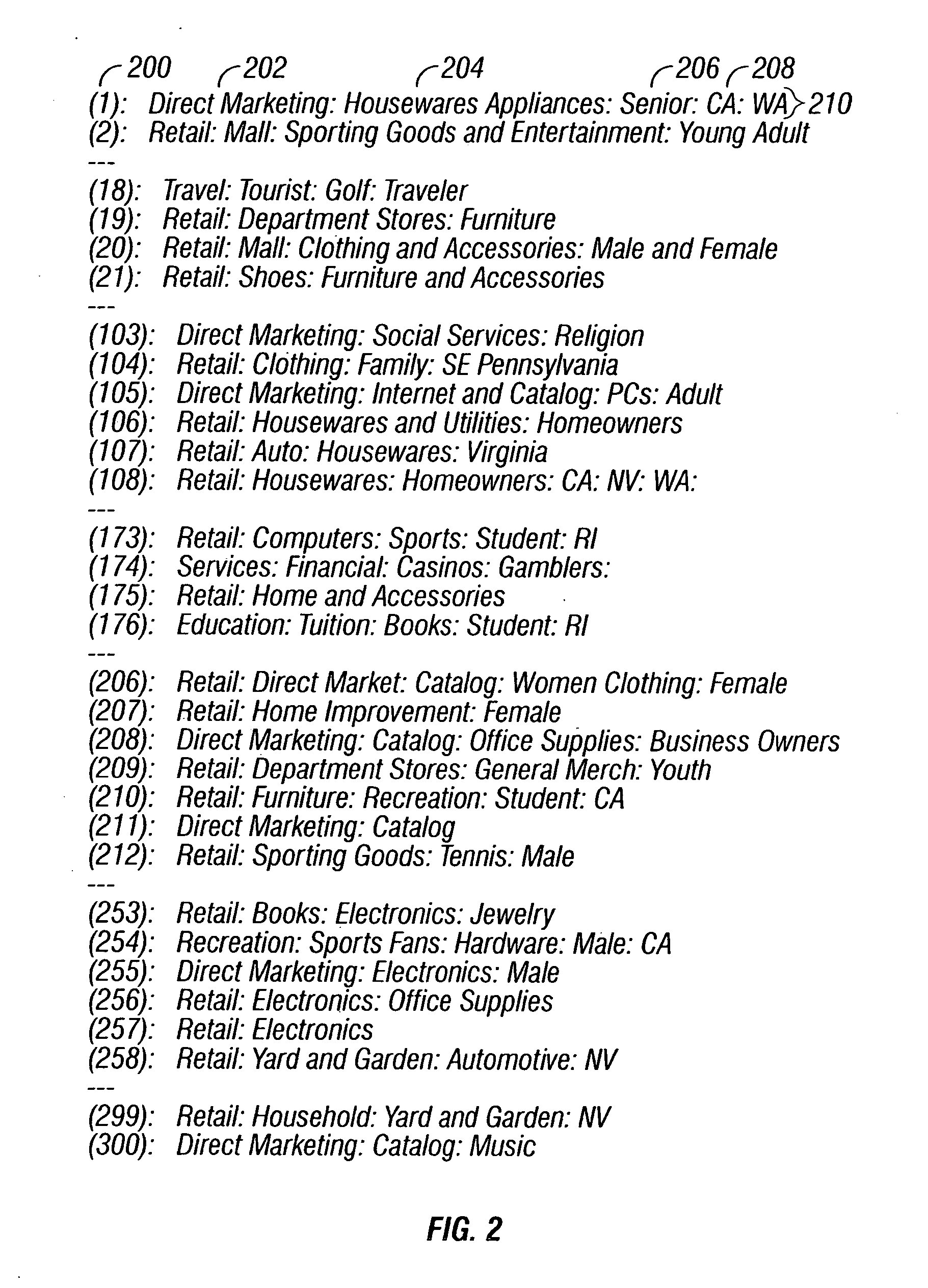Predictive modeling of consumer financial behavior using supervised segmentation and nearest-neighbor matching
a predictive modeling and consumer financial technology, applied in the field of consumer financial behavior analysis, can solve the problems of incomplete collection of unrelated data, poor indicator of consumer spending patterns, and often misstated approach to understanding consumer behavior, so as to accurately identify and capture the patterns of spending behavior, specific and accurate targeting of promotions, and increase membership value
- Summary
- Abstract
- Description
- Claims
- Application Information
AI Technical Summary
Benefits of technology
Problems solved by technology
Method used
Image
Examples
Embodiment Construction
[0055] A. Overview of Consumer and Merchant Vector Representation and the Co-occurrence of Merchant Purchases [0056] B. System Overview [0057] C. Functional Overview [0058] D. Data Preprocessing Module [0059] E. Predictive Model Generation System [0060] 1. Merchant Vector Generation [0061] 2. Training of Merchant Vectors: The UDL Algorithm [0062] a) Co-occurrence Counting [0063] i) Forward co-occurrence counting [0064] ii) Backward co-occurrence counting [0065] iii) Bi-directional co-occurrence counting [0066] b) Estimating Expected Co-occurrence Counts [0067] c) Desired Dot-Products between Merchant Vectors [0068] d) Merchant Vector Training [0069] 3. Clustering Module [0070] F. Data Postprocessing Module [0071] G. Predictive Model Generation [0072] H. Profiling Engine [0073] 1. Membership Function: Predicted Spending In Each Segment [0074] 2. Segment Membership Based on Consumer Vectors [0075] 3. Updating of Consumer Profiles [0076] I. Reporting Engine [0077] 1. Basic Reporting Fu...
PUM
 Login to View More
Login to View More Abstract
Description
Claims
Application Information
 Login to View More
Login to View More - R&D
- Intellectual Property
- Life Sciences
- Materials
- Tech Scout
- Unparalleled Data Quality
- Higher Quality Content
- 60% Fewer Hallucinations
Browse by: Latest US Patents, China's latest patents, Technical Efficacy Thesaurus, Application Domain, Technology Topic, Popular Technical Reports.
© 2025 PatSnap. All rights reserved.Legal|Privacy policy|Modern Slavery Act Transparency Statement|Sitemap|About US| Contact US: help@patsnap.com



